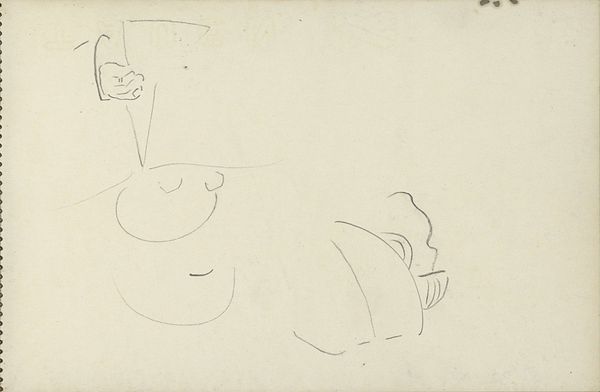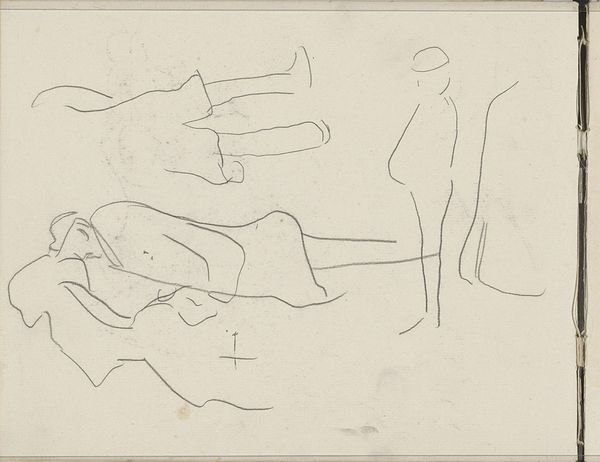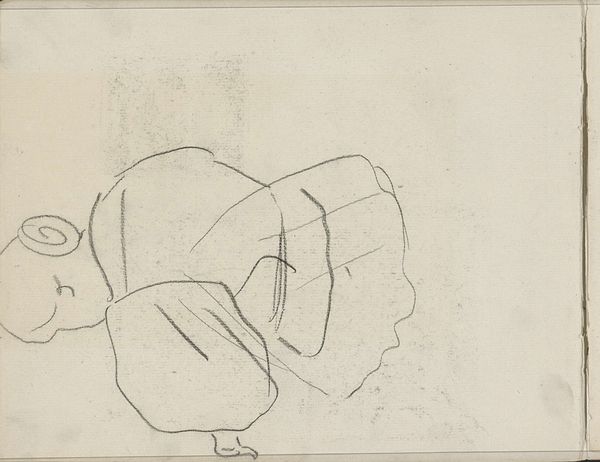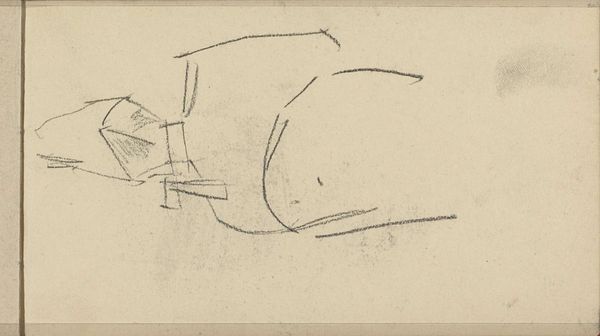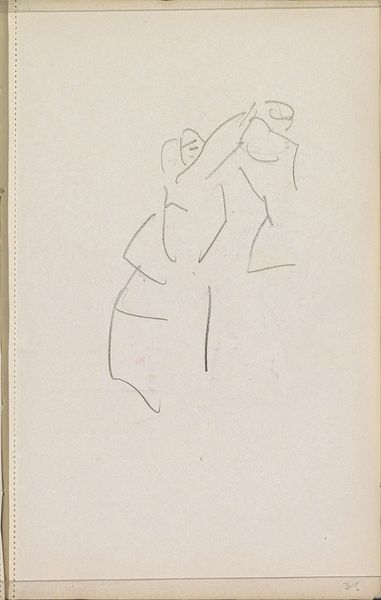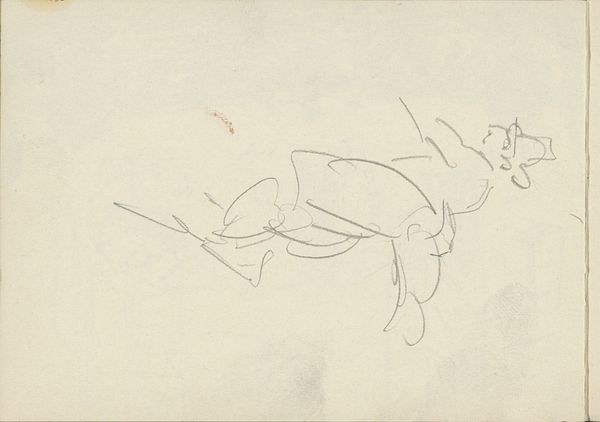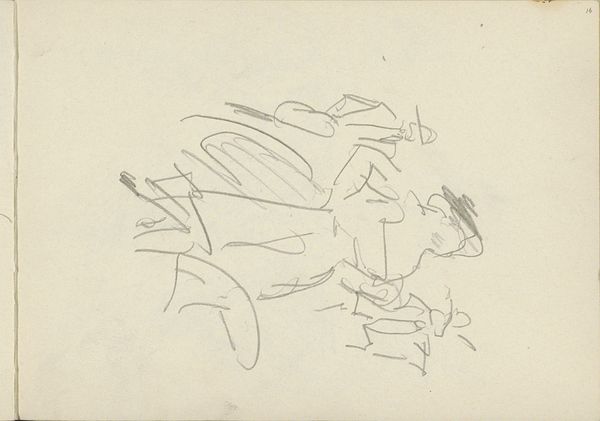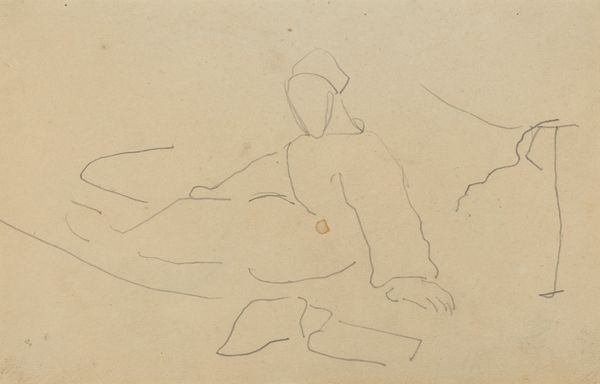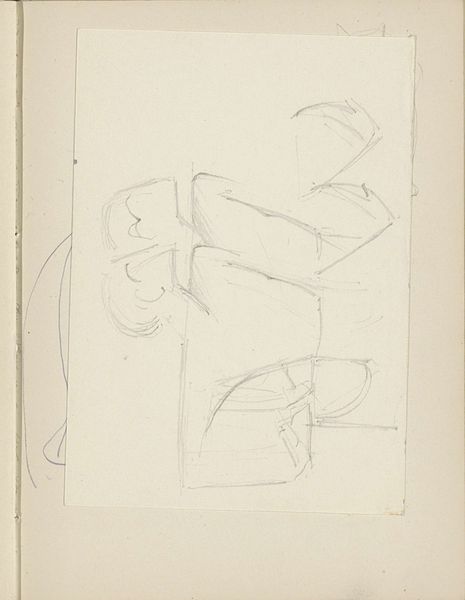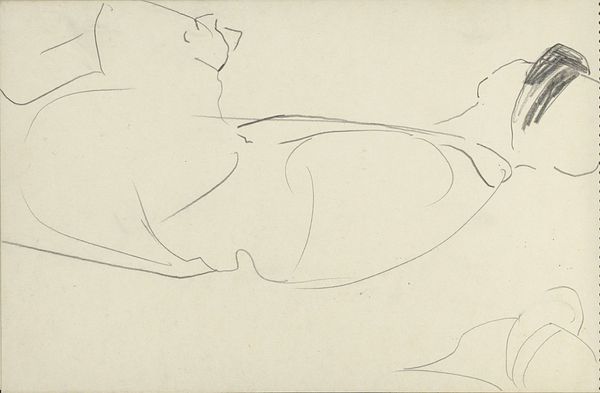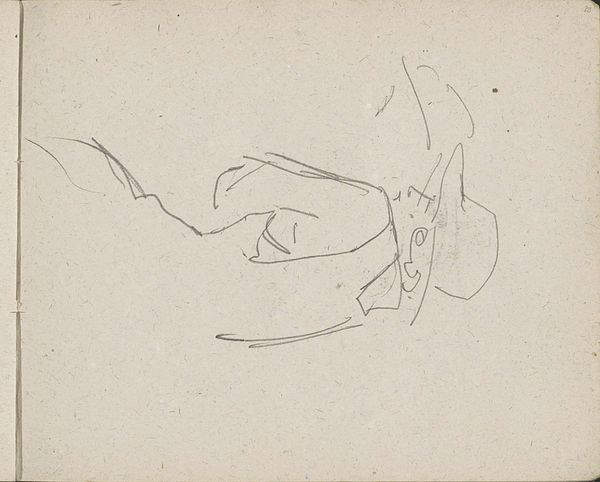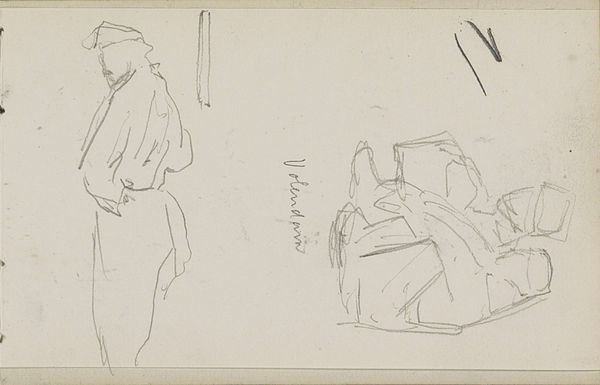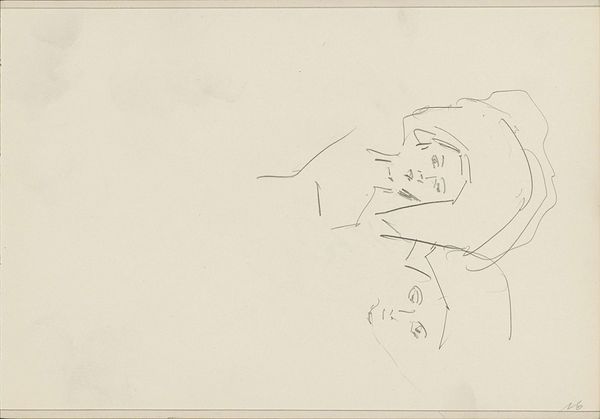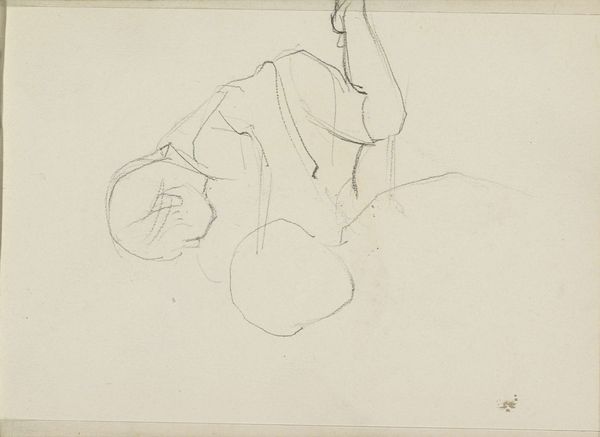
drawing, paper, ink
#
drawing
#
landscape
#
figuration
#
paper
#
ink
#
geometric
#
modernism
Copyright: Rijks Museum: Open Domain
Curator: This drawing, entitled "Twee figuren naast een fiets," which translates to "Two figures next to a bicycle," was created by Carel Adolph Lion Cachet sometime between 1930 and 1938. It’s currently held here at the Rijksmuseum. The medium is deceptively simple: ink on paper. Editor: Well, my first thought is—fleeting. It feels like a snatched moment, like seeing these figures from a moving train. There's a wonderful lack of fussiness, a confidence in the bare minimum of lines. Curator: The starkness really speaks to the rise of Modernism during that era. The emphasis on basic geometric shapes hints at a society moving towards simplification and functionality post World War I, and reflects the push-back against prior movements. Who are these figures? What is their relationship? Editor: It makes me think of a quiet, almost secretive conversation. Two men, possibly brothers or maybe even lovers, pausing on a journey. And that bicycle... is it a symbol of freedom, or just the best way to get around in those days? I wonder about the missing details - we only have suggestions. Where are they headed? Are they escaping something? Curator: I read this bicycle differently. For certain populations in that era, the bicycle represented social mobility and, importantly, independence, especially for women and the working class. Note the way Cachet presents the men—presumably—adjacent to it. Who has access to that independence, and who might not? Are we perhaps viewing two working-class individuals taking respite on their travels, a snapshot of society between the wars? Editor: Interesting! I like your analysis there; the sociopolitical aspect is unavoidable and vital for context. But the simplicity draws me back—the power in leaving things unsaid, trusting the viewer to complete the story. Like a half-remembered dream, you know? The suggestion of a narrative, rather than a detailed description. It is like a poem; Cachet gives us the tools, and we build from there. Curator: Ultimately, I think what makes this piece so enduring is precisely that tension between the personal and the political. Editor: Absolutely! It reminds us that even the simplest sketch can contain a whole world of meaning.
Comments
No comments
Be the first to comment and join the conversation on the ultimate creative platform.
